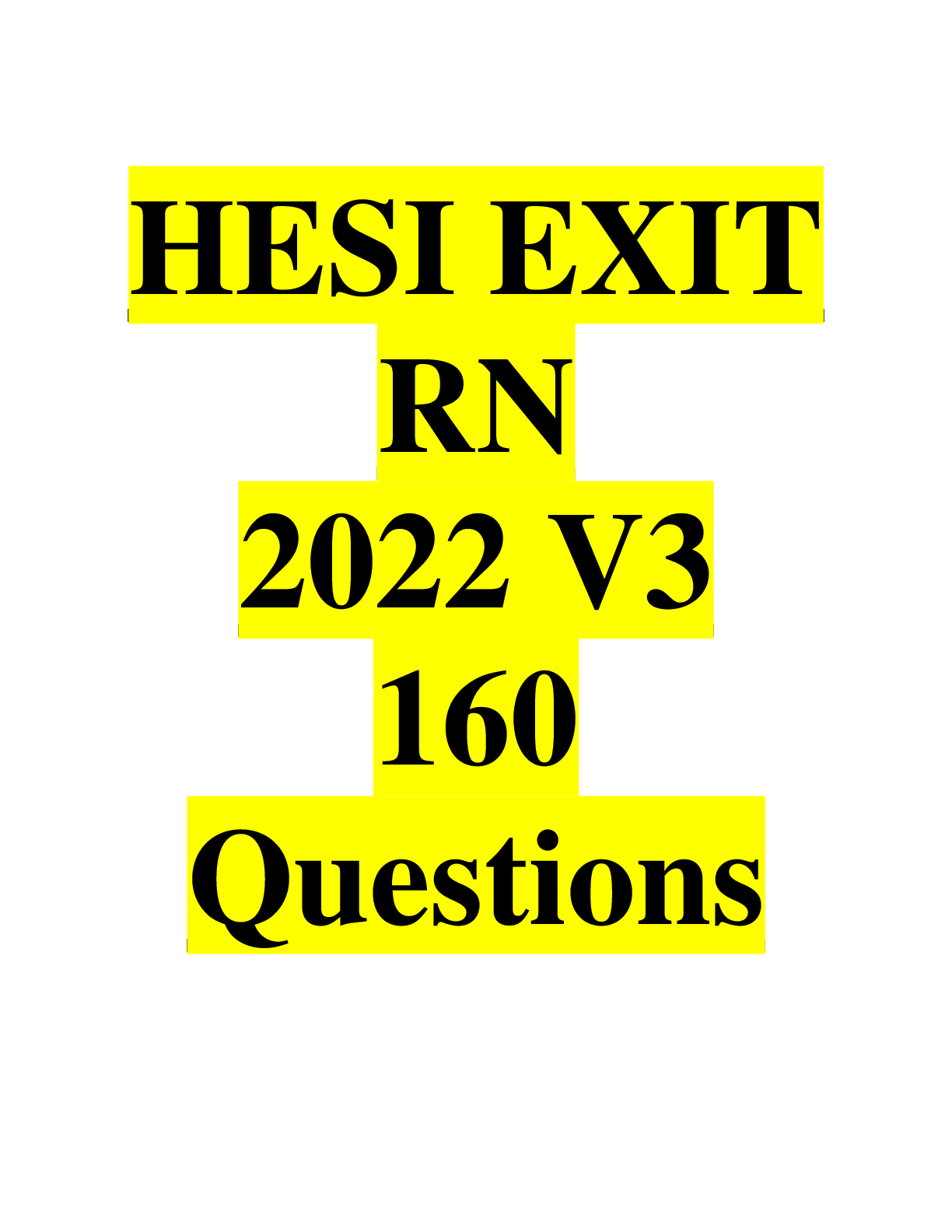HESI EXIT RN 2022 V3 160 Questions and Answers
Course
Project Management
Subject
Chemistry
Category
Questions and Answers
Pages
37
Uploaded By
ATIPROS
Preview 1 out of 37 Pages

Download all 37 pages for $ 11.50
Reviews (0)
$11.50
